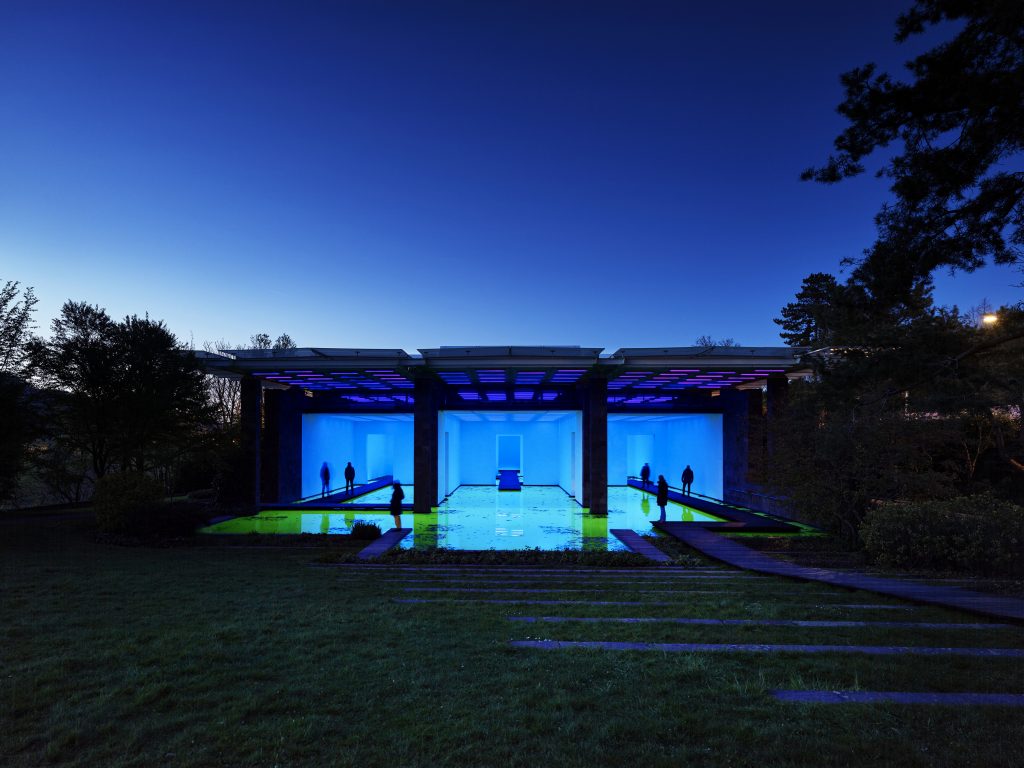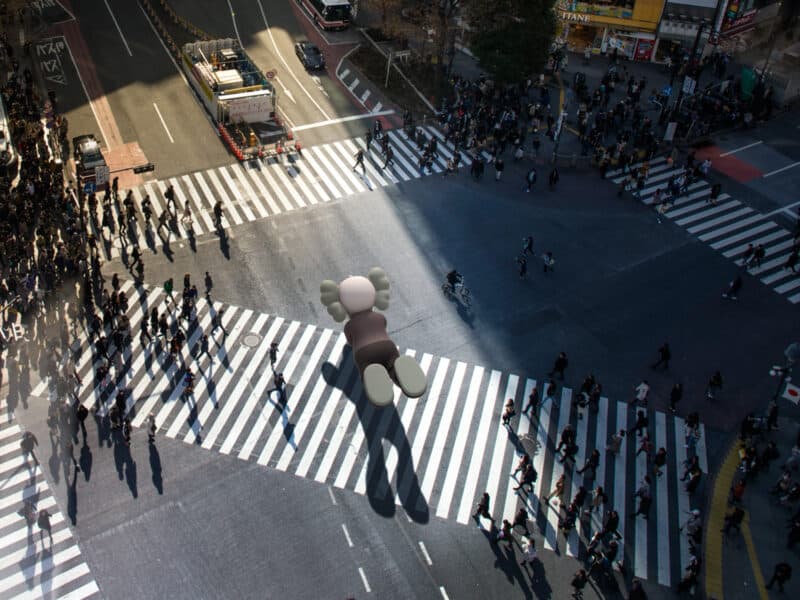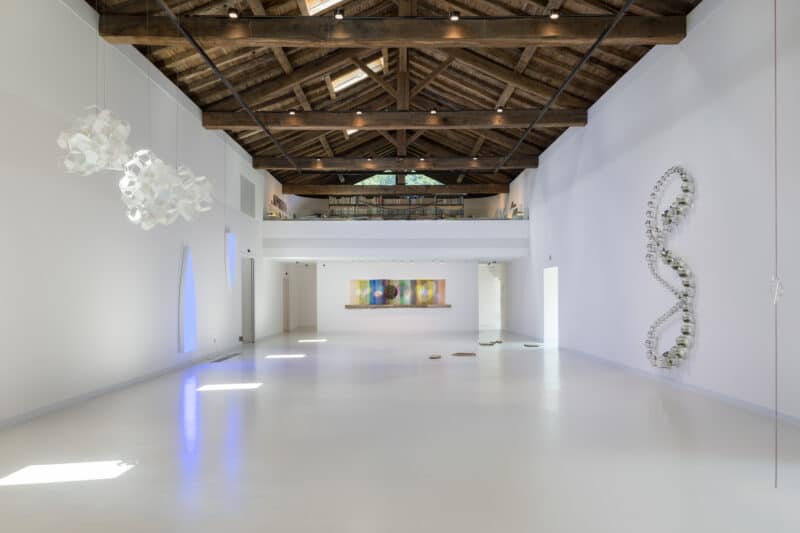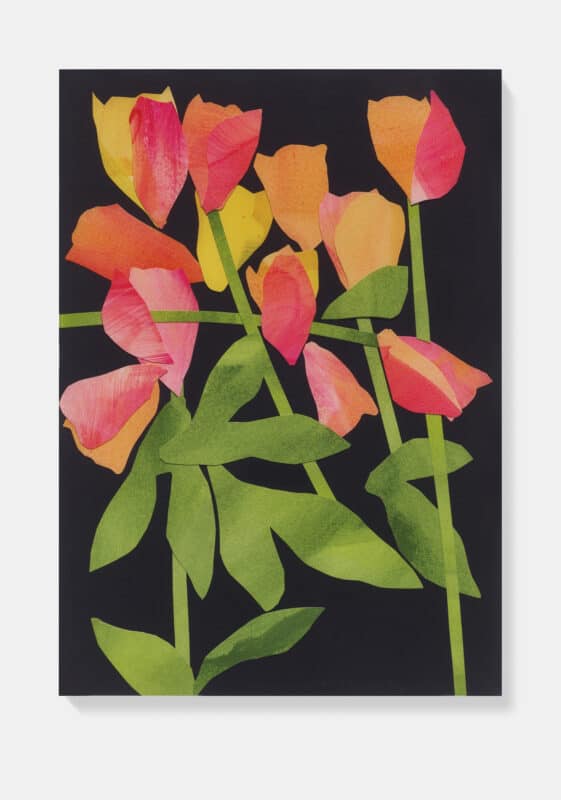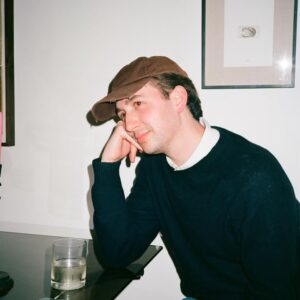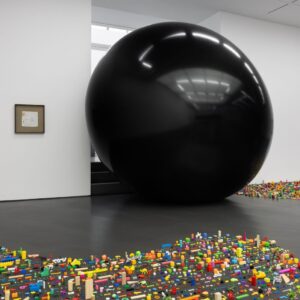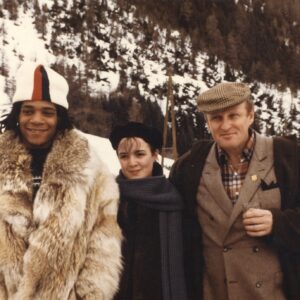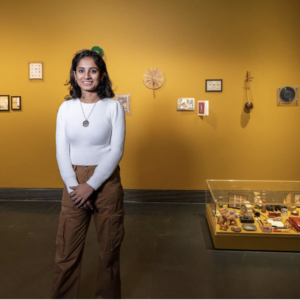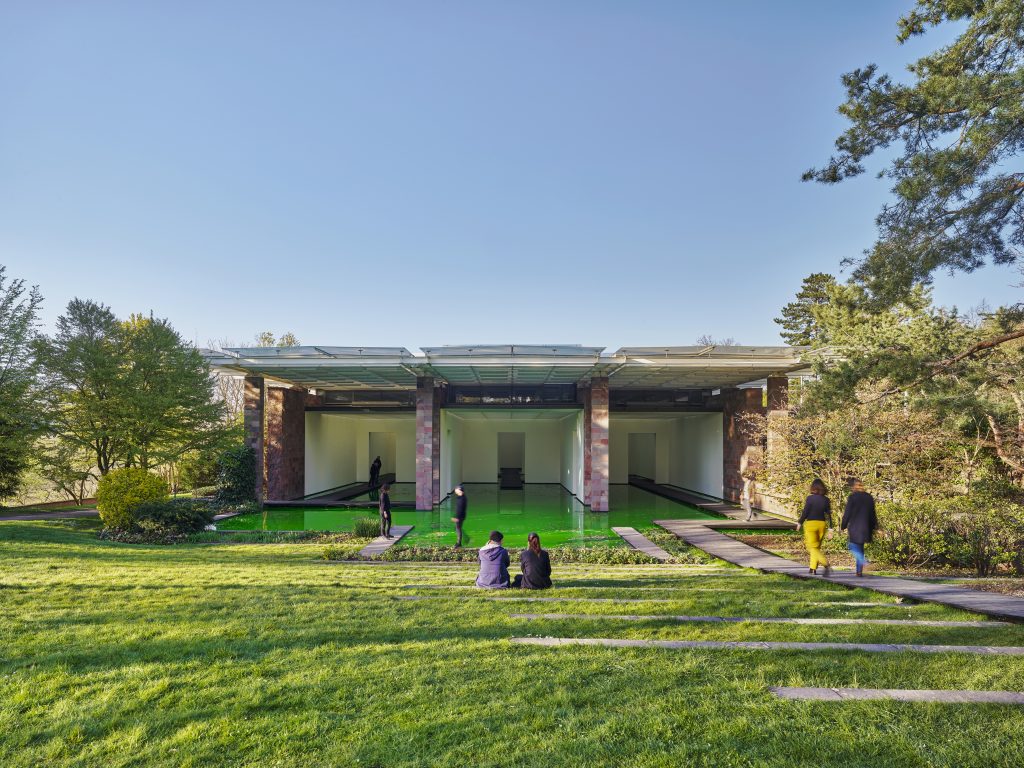
© 2021 Olafur Eliasson Photo: Pati Grabowicz Photo: Mark Niedermann
“Ever since I began practising as an artist in the early 1990s, I have been interested in perception and in the cognitive and cultural conditions that shape it. “Life” comes to life through your active encounter with it, through your perception. I’ve chosen not to offer a didactic or explanatory text to accompany the artwork, as this might shape visitors’ perceptions and understandings of the exhibition. It’s important to me not to share a finite perspective on “Life”. At the same time, I welcome what visitors bring with them to the artwork, their expectations and memories, thoughts and emotions.’
Olafur Eliasson
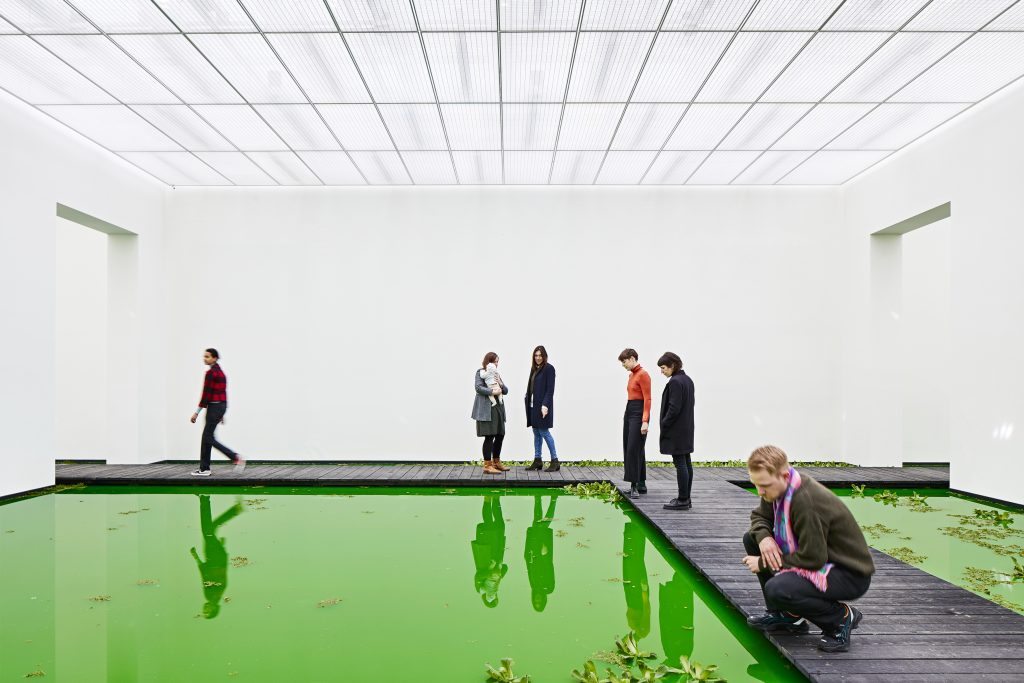
For over 25 years, Olafur Eliasson’s work has explored perception, movement, embodied experience, and feelings of self. Art, for him, is a crucial means for turning thinking into doing in the world. Eliasson’s diverse works – including sculpture, painting, photography, film, and installations – have been exhibited widely throughout the world. Beyond the museum and gallery, his practice engages the broader public sphere through architectural projects and interventions in civic space. Eliasson’s art invites viewers to explore future forms of coexistence by welcoming multiple perspectives – human and non-human alike. For his solo show at the Fondation Beyeler, the artist immerses the museum in a border-crossing investigation of our preconceptions of nature and culture.

Olafur Eliasson LIFE 18th April – 11th July 2021 fondationbeyeler.ch
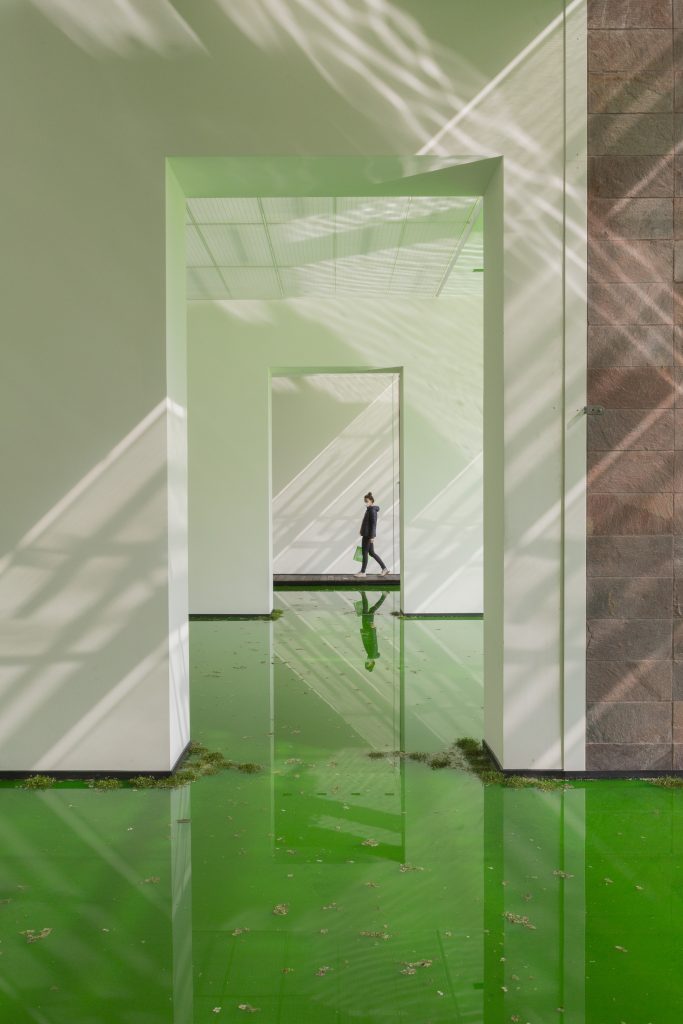
About the Artist
Olafur Eliasson’s art is driven by his interests in perception, movement, embodied experience, and feelings of self. He strives to make the concerns of art relevant to society at large. Art, for him, is a crucial means for turning thinking into doing in the world. Eliasson’s works span sculpture, painting, photography, film, and installation. Not limited to the confines of the museum and gallery, his practice engages the broader public sphere through architectural projects, interventions in civic space, arts education, policy-making, and issues of sustainability and climate change.
Eliasson was born in 1967. He grew up in Iceland and Denmark and studied from 1989 to 1995 at the Royal Danish Academy of Fine Arts. In 1995, he moved to Berlin and founded Studio Olafur Eliasson, which today comprises a large team of craftsmen, architects, archivists, researchers, administrators, cooks, programmers, art historians, and specialised technicians.
Since the mid-1990s, Eliasson has realised numerous major exhibitions and projects around the world. In 2003, Eliasson represented Denmark at the 50th Venice Biennale, with The blind pavilion. Later that year, he installed The weather project in Tate Modern’s Turbine Hall, London. Take your time: Olafur Eliasson, a survey exhibition organised by SFMOMA in 2007, travelled until 2010 to various venues, including the Museum of Modern Art, New York. Innen Stadt Aussen (Inner City Out), at Martin-Gropius-Bau in 2010, involved interventions across Berlin as well as in the museum. Similarly, in 2011, Seu corpo da obra (Your body of work) engaged with three institutions around São Paulo – SESC Pompeia, SESC Belenzinho, and Pinacoteca do Estado de São Paulo – and spread out into the city itself. In 2014, Riverbed filled an entire wing of Denmark’s Louisiana Museum of Modern Art with stones and water, emulating a river in a rocky landscape; later that year, Contact formed the inaugural exhibition at Fondation Louis Vuitton, Paris. Verklighetsmaskiner (Reality machines), at the Moderna Museet in Stockholm in 2015, became the museum’s most visited show by a living artist. In 2016, Eliasson created a series of interventions for the palace and gardens of Versailles and mounted two large-scale exhibitions: Nothingness is not nothing at all, at Long Museum, Shanghai, and The parliament of possibilities, at Leeum, Samsung Museum of Art, Seoul. Green light – An artistic workshop, created in collaboration with TBA21 (Thyssen-Bornemisza Art Contemporary), offers a response to the challenges of mass displacement and migration. Originally hosted by TBA21 in Vienna in 2016, the project was part of Viva Arte Viva, the 57th International Art Exhibition – La Biennale di Venezia, in 2017. Eliasson’s site-specific installation Reality projector opened at the Marciano Foundation, Los Angeles, in March 2018, the same month as his solo exhibition The unspeakable openness of things at Red Brick Art Museum, Beijing. In 2019, In real life, a wide-ranging survey exhibition of Eliasson’s artistic practice over the past twenty-five years, opened at Tate Modern, in London, and travelled to Guggenheim Bilbao in 2020. Olafur Eliasson: Symbiotic seeing opened at Kunsthaus Zürich in January 2020 and Sometimes the river is the bridge was shown at the Museum of Contemporary Art Tokyo in spring 2020.
Eliasson has also produced numerous projects in public space. Green river was carried out in various cities between 1998 and 2001. Eliasson designed Serpentine Gallery Pavilion 2007 together with architect Kjetil Thorsen for London’s Kensington Gardens. The New York City Waterfalls, commissioned by the Public Art Fund, were installed along the city’s waterfronts in 2008. Your rainbow panorama, a circular coloured-glass walkway atop ARoS Museum, Aarhus, Denmark, opened in 2011. Harpa Reykjavik Concert Hall and Conference Centre, 2011, for which Eliasson created the facades in collaboration with Henning Larsen Architects, won the Mies van der Rohe Award 2013. Ice Watch brought melting icebergs from Greenland to Copenhagen in 2014 and to Paris on the occasion of the COP21 Climate Conference in 2015. Fjordenhus in Vejle, Denmark, the first building designed entirely by Eliasson and the architectural team at Studio Olafur Eliasson, was completed in June 2018.
As a professor at the Berlin University of the Arts, Eliasson led the Institut für Raumexperimente (Institute for Spatial Experiments; 2009–14), a five-year experimental programme in arts education located in the same building as his studio (www.raumexperimente.net).
In 2012, Eliasson and engineer Frederik Ottesen founded the social business Little Sun. This global project provides clean, affordable energy to communities without access to electricity, encourages sustainable development through sales of Little Sun solar-powered lamps and chargers, and raises global awareness of the need for equal access to energy and light (www.littlesun.com).
Eliasson and architect Sebastian Behmann founded Studio Other Spaces, an international office for art and architecture, in Berlin in 2014. As an architectural counterpart to Studio Olafur Eliasson in the same building, Studio Other Spaces focuses on interdisciplinary and experimental building projects and works in public space (www.studiootherspaces.net).
In 2019 Eliasson was appointed Goodwill Ambassador for renewable energy and climate action by the United Nations Development Programme.
Eliasson lives and works in Copenhagen and Berlin.
